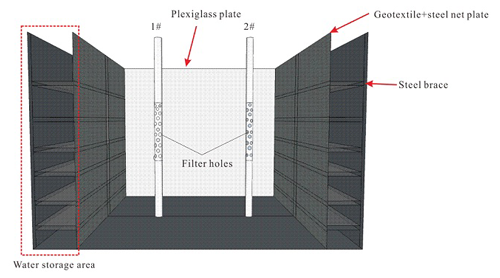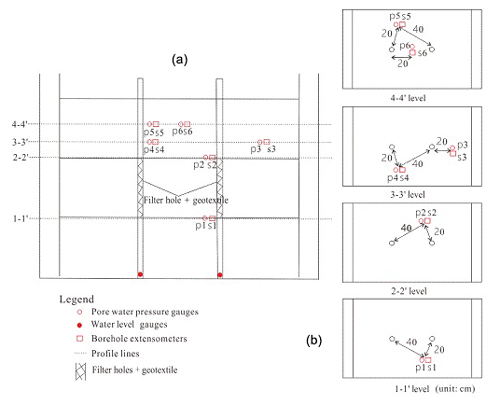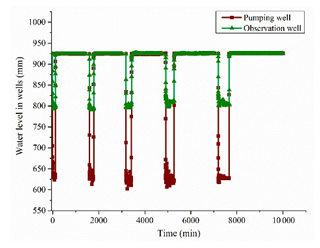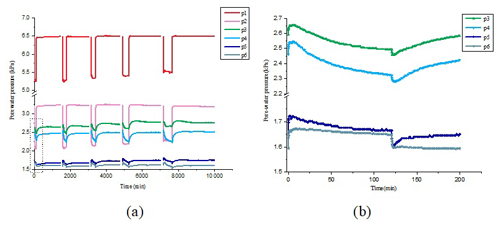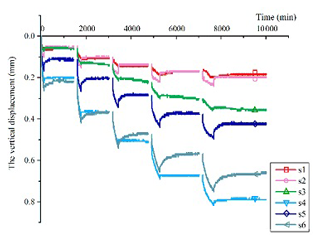Experimental study on mechanism for pumping-induced land subsidence
Groundwater pumping can cause severe land subsidence, yet the mechanisms have not been completely clear. A laboratory physical model test was done to investigate the mechanism for pumping-induced land subsidence. In the model test, a model well was installed and pumpage through the well was taken. During and after pumping, the soil displacement and the pore water pressure were documented. The pore water pressure within the pumped sand layer decreased immediately after pumping and recovered immediately after stopping pumping, while the pore water pressure in the neighboring silty clay layers first increased and then decreased with pumping, and first decreased and then increased after pumping was stopped and groundwater level in the sand layer recovered. The duration within which the pore water pressure in the silty clay increased when pumping was increasingly great with the distance from the pumped sand layer. The compaction of the neighboring silty clay first occurred near the interface between the silty and sand layers, and the silty clay expanded vertically within some zones. The test results indicate that the mechanism for land subsidence is complex. Due to their low permeability, aquitard units may expand in a period when groundwater is withdrawn from the neighboring aquifer units, and they may compact when groundwater is recharged into the neighboring aquifer units. This is one of the reasons for the lagging compaction of aquitard units.






